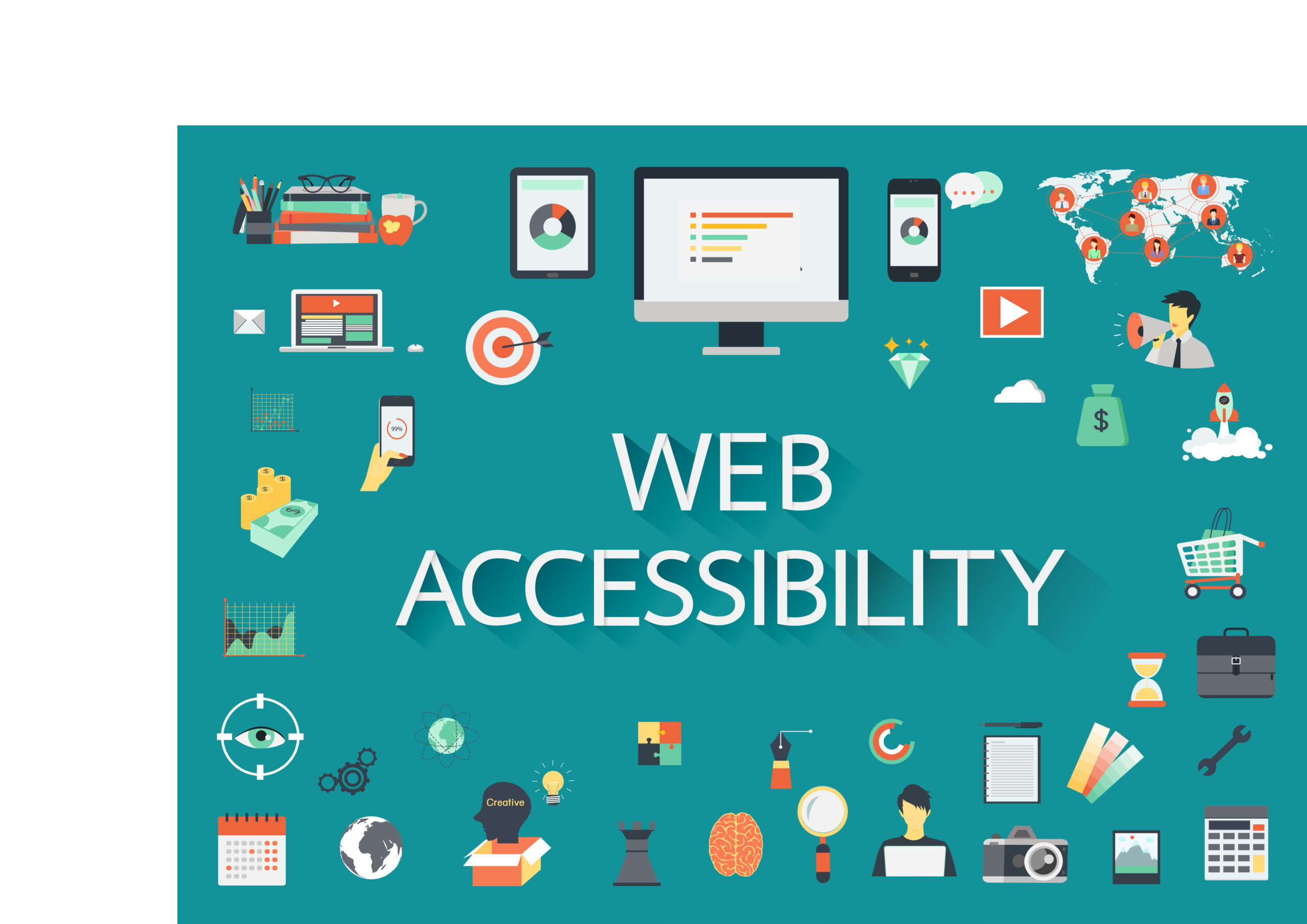
Website Design for Law Firms: The Importance of Website Accessibility for SEO

What is Web Accessibility?
In simple terms, site accessibility means that everyone can access and use your website, including people with diverse abilities. It involves ensuring that all users can perceive, understand, navigate, and interact with a website. Things like permanent auditory, physical, cognitive, neurological, and visual impairments as well as temporary impairments like surgery recovery are all taken into account. Disabilities like situational impairments are also included. Those are scenarios like a limited internet connection or movement, or environmental impairments like an inability to play loud audio.
Website compliance is something that’s not only monitored by the ADA but also contributes to various ranking factors as well as general user experience.
Why Does Website Accessibility Matter?
The goal of website compliance is to provide equal access to web content for users with disabilities. These efforts not only improve a website’s overall health and performance but also ensure that businesses are complying with the ADA. So, digital accessibility is something that you need to include, but it also offers other benefits too. Accessible websites:
- Are more likely to appear in search results because search engine crawlers can index them more easily
- Offer a better user experience which results in higher engagement rates
- Are more likely to be recommended to other contacts or followers
- Display easy navigation where people can find the information that’s valuable to them faster
- Ensure regulatory compliance and decrease possible legal implications or consequences of inaccessible websites
Accessibility and Search Engine Optimization
While SEO tactics focus on ensuring search engine access for websites, SEO can also be impacted by various accessibility elements. In particular, these are some of the components that also affect website accessibility.
- Accurate page titles – This section mainly reflects your website content for the visitor, but they also describe the web page and are the main way that search engines know what is on the page. Additionally, these titles explain your content to Google so that they can ensure it matches the user’s intent and needs, while also offering clear direction to users for navigation.
- Heading tag structure – These don’t play a direct role in ranking factors, but they are essential for navigation on screens using the help of assistive technologies for people with disabilities. Header tags are generally reserved for web page content management systems to create visually focused page layouts too.
- Search engine crawlers – The H1 tag sizes the content weight in SEO and produces headings that are keyword-rich and descriptive. Providing an overview of the main page content to search engine crawlers, header tags further define the page structure. Assistive technology uses the help of headings to navigate pages and move to different content sections, so they are very important for accessibility as well as SEO.
- Sitemaps – Onsite sitemaps have always been important for SEO, but they also improve accessibility. By providing an overview and transparent access to the site’s important pages and content, crawlers can use sitemaps to find links on other site pages.
- Link anchor text – This copy is the linked page content that helps users to decide if they want to click on the link to the next page. Both screen readers and search engine crawlers use anchor text to comprehend the destination page’s content. Targeted URL topics and keyword-rich anchor text assist web crawlers in understanding content better, and having a concise and clear message helps all users to better navigate web pages.
- Breadcrumb links – These let visitors trace and navigate back to the page they are on and display the site structure to screen readers as well as search engine crawlers. These links also play an important role in improving a site’s internal linking, particularly for large websites with more intense navigation structures. However, there are a few things that must be considered for greater accessibility; such as placing them in the same place consistently throughout the site and making them descriptive enough for screen readers to tab through.
- Video transcriptions – Based on the Web Accessibility Guidelines, websites must provide video transcriptions for all their videos. This way blind and deaf users can watch the video in real time without unnecessary interruptions. In addition, video transcriptions add captions that will improve search engine efforts.
- Alt Text – Image alt text shows text alternatives to those with visual impairments, and many developers consider it the most common intersection between accessibility and SEO. When screen readers read alt text aloud, they have to be relevant and accurate and not simply stuffed with keywords. Search engines can do a much better job of detecting keyword stuffing now, and computer vision can identify an image and automatically create applicable alt text. Furthermore, accurate alt text helps search engines to better understand images and how to crawl them. In general, alt text helps to display images and information more interactively while helping search engines comprehend your site better.
Takeaway:
One of the most important things to understand when it comes to website accessibility is that not only is it necessary, it’s valuable. While accessibility is not a direct ranking factor for search engines, these tactics work in conjunction with SEO. In many ways, accessibility helps search engine crawlers and algorithms to understand website content which will increase visibility and discoverability. Therefore, website accessibility is necessary for effective SEO. Have you reviewed your website’s accessibility compliance lately? If not, it might be time for a refresh. Check in with our web design experts to ensure that your site is not only fully compliant but user-friendly and optimized for search.
Are you ready to get started generating new, qualified leads?
Contact us to get started and let us help you energize your digital marketing and business development efforts.
Contact Us
